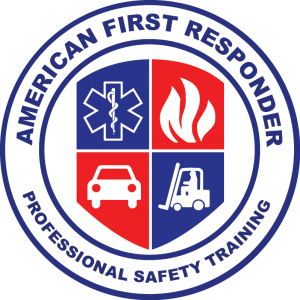How Does An AED Work?
How Does An AED Work?
 Just about everyone has heard the term “AED”, but many do not fully understand what it is, and how it works. An Automated External Defibrillator or AED is a device that is used to send an electrical shock to the heart of a person in Sudden Cardiac Arrest (SCA) in order to return the quivering heart to a normal heartbeat rhythm so that it can once again pump blood throughout the body.
Just about everyone has heard the term “AED”, but many do not fully understand what it is, and how it works. An Automated External Defibrillator or AED is a device that is used to send an electrical shock to the heart of a person in Sudden Cardiac Arrest (SCA) in order to return the quivering heart to a normal heartbeat rhythm so that it can once again pump blood throughout the body.
There is some misunderstanding surrounding AED’s, so I want to take a moment to explain a few things about an AED.
Many people think that “An AED is used to restart the heart”. Actually just the opposite is true, an AED is used to temporarily stop the heart.
During Sudden Cardiac Arrest (SCA) the heart is normally experiencing either Ventricular Fibrillation “V-Fib”, or Ventricular Tachicardia “V-Tach” or simply “VT”. In either case the heart is not beating normally but is quivering all over because the electrical impulses that normally tell the heart to beat in a rhythmic fashion have become chaotic and disorganized. It is believed that there are many reasons that could cause this to occur yet not much is known on the causes of ventricular fibrillation.
In order to reverse this process an electrical shock is needed to be sent through the heart using an AED. The electrical shock brings the heart to a stop by overriding the normal electrical impulses of the heart.
This is done in hops that the sinoatrial node or “SA node” which is in the right atrium of the heart (upper left side of the heart when looking at it from the front) will sense that the heart has stopped beating and will send an electrical impulse to the heart for it to start beating again. The SA node is the natural impulse-generating (pacemaker) tissue of the heart which causes the heart to beat in a normal sinus rhythm.
Once the SA node initiates the electrical impulse necessary for the heart to beat the other myocardial cells (cells of the heart) then generate an impulse to keep the heart muscles contracting causing the heartbeat.
Basically the SA node acts like the “control room” for the factory (heart). The SA node blows the whistle to let the factory workers (heart cells) know that break time is over and it’s time to go back to work. Then the workers get back to work making the heartbeat.
When using an AED to shock the heart, you can think of the heart like your computer. When your computer messes up and freezes and stops responding you reboot it to resolve the problem. The AED basically is rebooting the heart in the same way by shocking it.
Since an AED is used to bring the heart to a stop, it is very important to make sure that no one is touching the patient when the shock is delivered. There is a chance that the shock may travel through the patient and into the person touching the patient which could stop their heart as well.
This is why during AED training the instructor and training videos stress the importance of making sure that absolutely no one, including yourself is touching the patient before the shock button is pressed.
So when an instructor keeps harping at you about making sure that everyone is clear before pressing the shock button remember, he is thinking about your safety and others around you.
If you would like to purchase an AED for your home or business, visit American Frist Responder AED Sales and Service

How Does An AED Work?
Just about everyone has heard the term “AED”, but many do not fully understand what it is, and how it works. An Automated External Defibrillator or AED is a device that is used to send an electrical shock to the heart of a person in Sudden Cardiac Arrest (SCA) in order to return the quivering heart to a normal heartbeat rhythm so that it can once again pump blood throughout the body.
There is some misunderstanding surrounding AED’s, so I want to take a moment to explain a few things about an AED.
Many people think that “An AED is used to restart the heart”. Actually just the opposite is true, an AED is used to temporarily stop the heart.
During Sudden Cardiac Arrest (SCA) the heart is normally experiencing either Ventricular Fibrillation “V-Fib”, or Ventricular Tachicardia “V-Tach” or simply “VT”. In either case the heart is not beating normally but is quivering all over because the electrical impulses that normally tell the heart to beat in a rhythmic fashion have become chaotic and disorganized. It is believed that there are many reasons that could cause this to occur yet not much is known on the causes of ventricular fibrillation.



 American First Responder
American First Responder